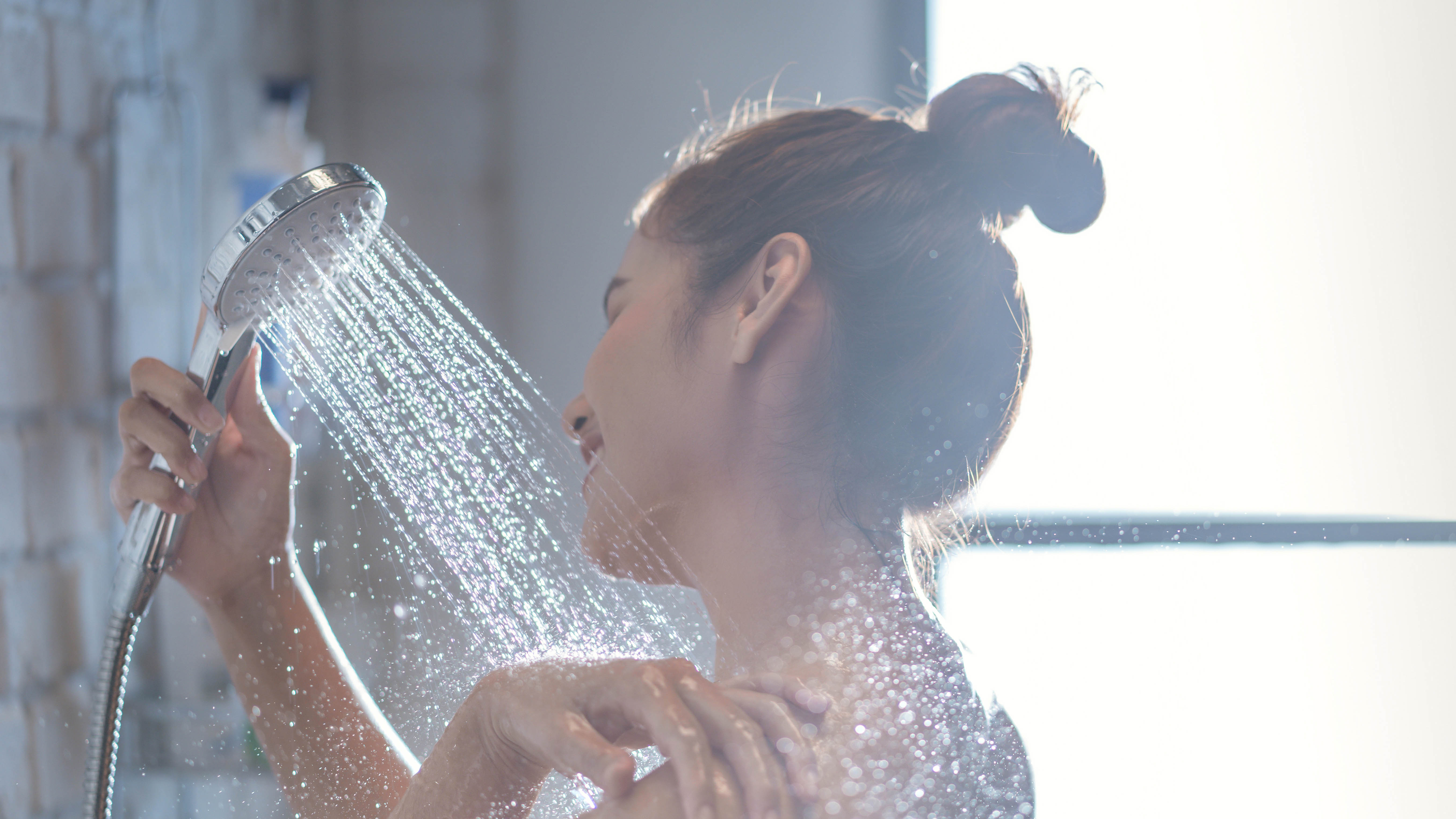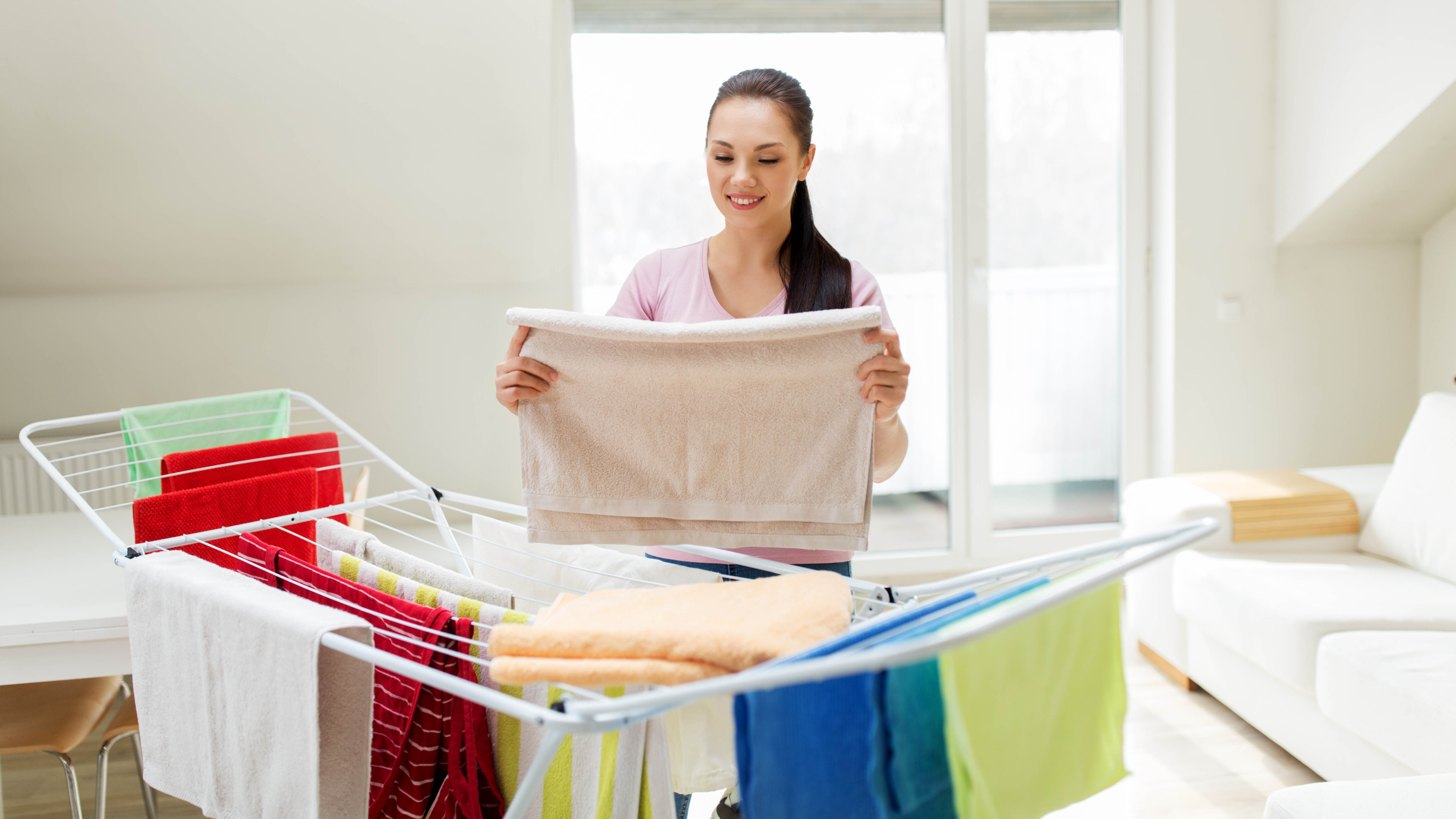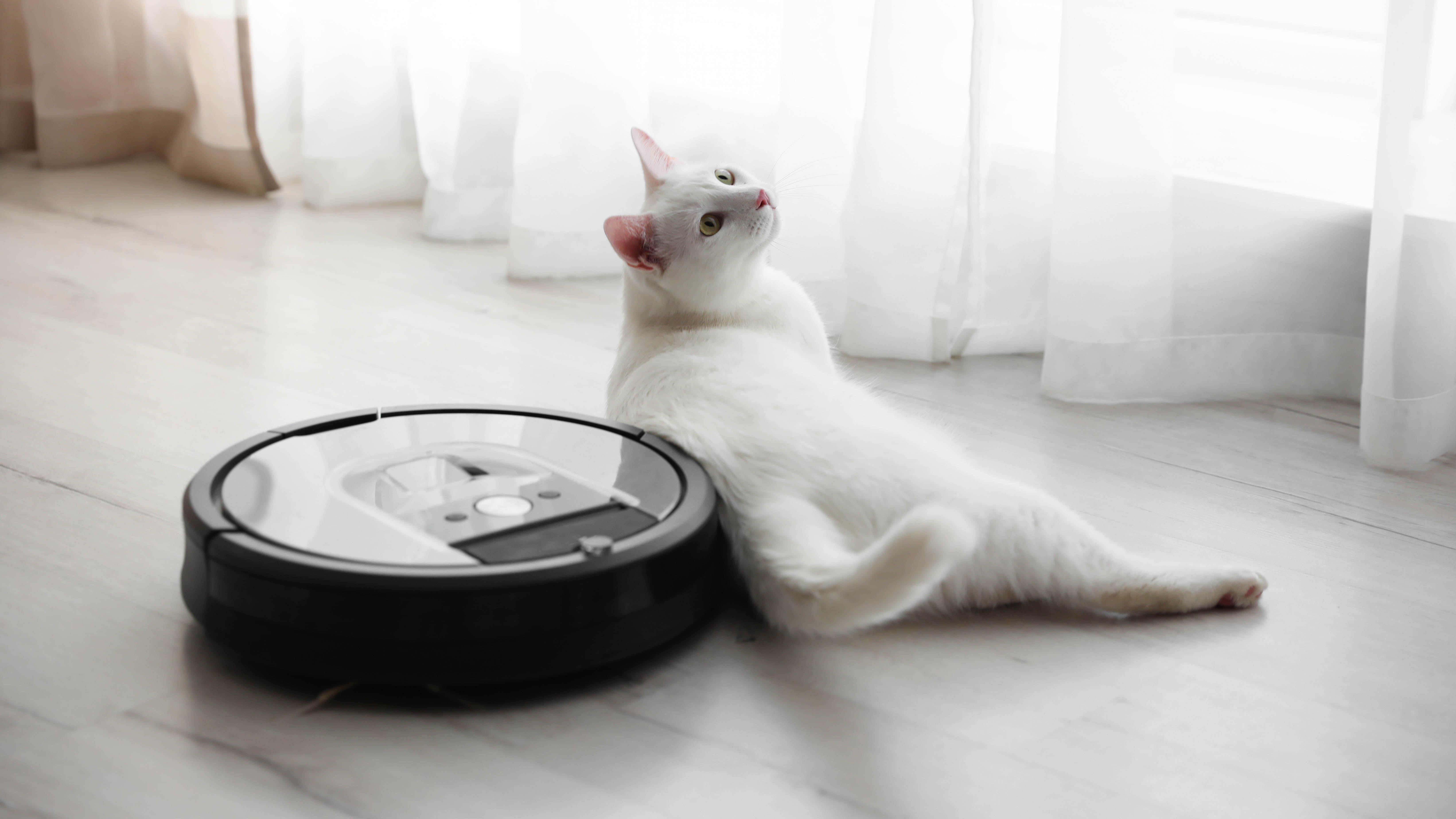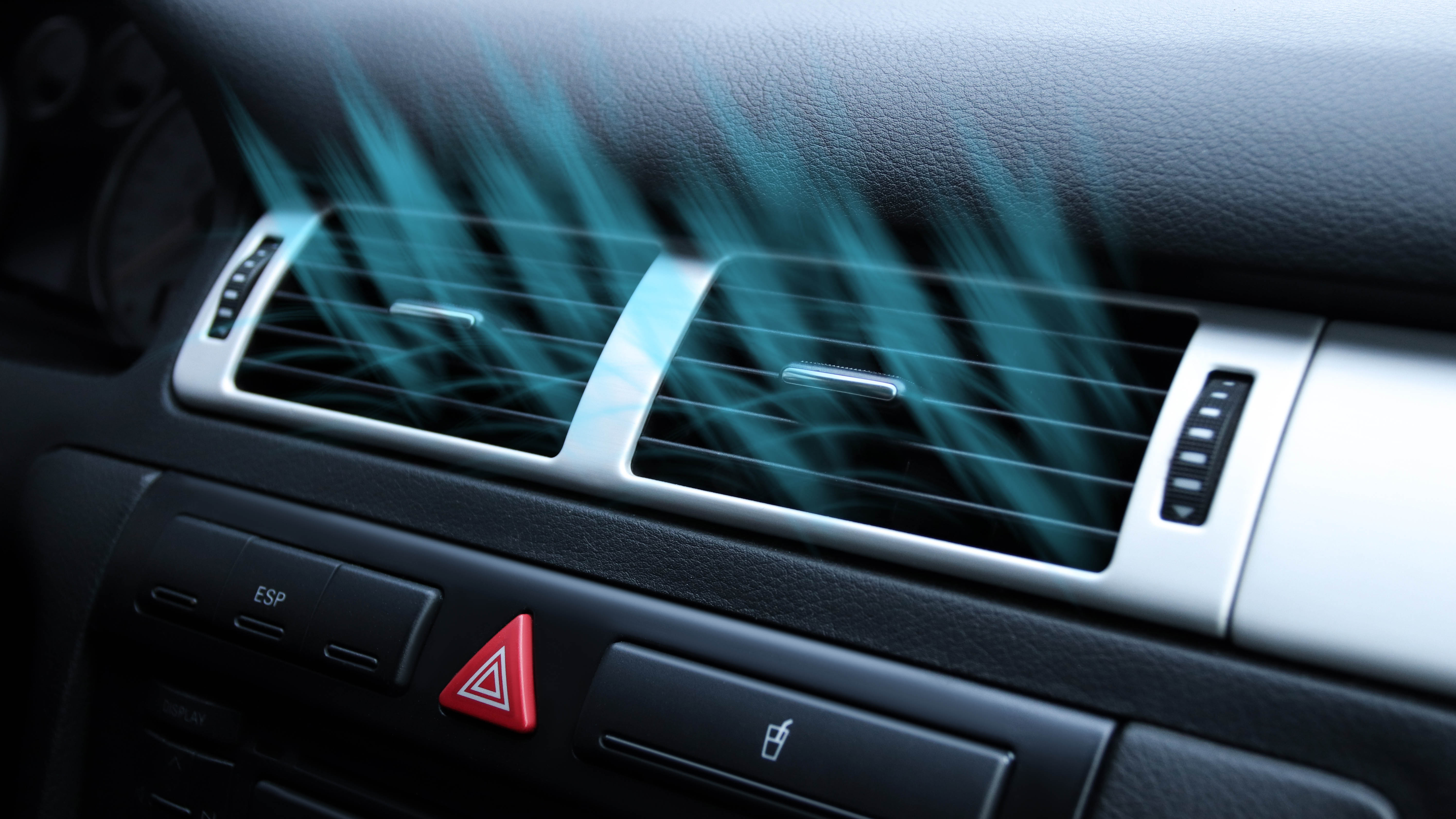9 ways to fight allergy season

Spring is just around the corner, and while it brings warmer weather and brighter mornings, it also produces no end of pollen with fresh plant life. One of the most beautiful times of the year can quickly become a hindrance if you struggle with allergies.
Before you know it, your eyes are itchy, your nose is streaming and you can’t stop sneezing.
This reaction is all too common, and it’s something we have to live with. But, that’s not to say you can’t reduce your exposure. To help navigate allergy season, we’ve pulled together 9 tips to reduce pollen allergies.
We'll look at best practices while staying at home as well as venturing outdoors, so you can reduce your exposure around the clock. Here are 9 ways you can successfully fight back against allergy season.
Plus, check out these 5 cleaning tips to reduce pollen in the home.
9 ways you can fight allergy season
- Invest in an air purifier
- Shut the windows
- Take a shower
- Clean your home
- Dry your clothes indoors
- Brush your pets outside
- Monitor the conditions
- Protect yourself
- Fit a cabin air filter in your car
Read on to see detailed guidance for each.
At home
1. Invest in an air purifier

The first step is to invest in one of the best air purifiers. These are brilliant for reducing airborne pollutants around the home, such as pollen and pet dander. They work by sucking in the air, filtering out any unwelcome particles, and then redistributing it back into the room. They’re useful for deodorizing too if the filter comes with a carbon layer.
Most consumers use air purifiers in the bedroom at night, as this is when symptoms can flare up. With an efficient air purifier, you can breathe with ease as you sleep, and don’t have to worry about congestion or an itchy throat waking you up. Just make sure the model you choose comes with a night mode if this is your intended use.
You should also check out the CADR (clean air delivery rate) for your potential air purifier. The higher the number, the more efficient it will be at cleaning your air.
2. Shut the windows

What’s the point in wasting energy on an air purifier if you leave the windows open? Pollen can easily blow into your home if windows and doors are left wide open. For this reason, you really want to leave them shut whenever possible. This isn’t exactly ideal should you want to vent moisture or lower the temperature of your home. But, it can make a big difference to your allergies.
Should you need to vent moisture, you can always rely on one of the best dehumidifiers. And there are ways to cool down a room without opening the windows as well. If you need to open your windows, try to time it with when the pollen count is at its lowest. This would usually be late-afternoon until the early-evening. Don't open your windows first thing in the morning, up until mid-afternoon, as this is when the pollen count is at its highest.
3. Take a shower

Once you’re home, you assume your allergy symptoms should lessen. Unfortunately, that’s not always the case, particularly if you don’t wash the residual pollen away. As we walk around outdoors, pollen collects and sticks to our hair, skin and clothes. By the time we reach home, we’re essentially carrying exactly what’s triggering our symptoms.
Take the time to shower once you’re indoors to limit your exposure. Make sure you change your clothes after you shower as well — otherwise this will be counterproductive. This also prevents you from spreading pollen to your bed sheets later that day, which can worsen the effects. Make sure any items of clothing which have collected pollen are washed with one of the best washing machines before you wear them again.
4. Clean your home

Unfortunately, pollen will always find its way into your home, so you need to clean it regularly to keep the levels down. Dust can contribute to your allergies in general, so it’s good practice to clean thoroughly all year around. Dust your home regularly using a damp microfiber cloth. These are brilliant for all kinds of cleaning tasks as the microfibers collect dust and lint in a single pass, no chemicals required.
Once you’ve finished dusting, you’ll want to break out one of the best vacuum cleaners and get to work on your floors. It’s important you follow the chores in this order, because dusting will push residual dust into the air to land on your floors. So the tasks would be counterproductive if they were reversed. Dust and vacuum your home once a week. You can also rely on one of the best robot vacuums to keep on top of everyday light cleaning.
5. Dry your clothes indoors

While hanging your clothes to dry outdoors is a great energy-saver versus using one of the best clothes dryers, it could be making your allergies worse. As the clothes dry in the wind, pollen collects and sticks to the fabric, meaning they’re contaminated before you even have a chance to wear them.
Instead, try drying your clothes indoors using a clothes drying rack such as the Amazon Basics Foldable Laundry Rack ($36.74, Amazon). Remember that you will need to keep the room ventilated while you do this though, otherwise you encourage mold. Again, dry your clothes in the late-afternoon/early-evening to reduce exposure, or use a dehumidifier.
6. Brush your pets outside

Just as you can carry pollen into your home, so too can your pets. This will be the case whether they’ve simply had some time to explore the backyard, or have been for a full-fledged walk around the park. And considering how active they are in the house, pets can prove to be a serial spreader of pollen.
To prevent this, make sure you brush down your pets before they come inside. This will remove any loose fur which may shed and lead to allergies, plus it will brush the pollen away. An example of this would be the Hertzko Self-Cleaning Slicker Brush ($14.99, Amazon).
Outdoors
1. Monitor the conditions

The pollen levels will actually vary day-by-day, so it’s good practice to keep an eye on the conditions and pick and choose the best days to venture outside. Pollen.com produces a daily pollen forecast which is worth following. If levels are predicted to be high, you might want to stick to indoor spaces on that particular day.
You should keep the outdoor weather conditions in mind as well. The rain can be good in that it suppresses and washes the pollen away. However, according to the Asthma and Allergy Foundation of America: ‘ When it rains when grass and weed pollen is high, drops can hit the ground and break up clumps of pollen into smaller particles. They then quickly disperse, causing a sudden increase in allergy and allergic asthma symptoms during the rain shower. This tends to happen more during sudden, heavy downpours.’
Dry, windy conditions aren’t exactly ideal either because plants and trees can release more pollen in such circumstances. You’re best off venturing out when pollen levels are low on the whole, and while the rain is light and fresh to offer short-term relief.
2. Protect yourself

If you suffer severely from allergies, it’s a good idea to protect yourself from exposure as best you can, whenever you venture outdoors. There are several ways you can do this. One option is to rub some petroleum jelly on your nostrils. This essentially catches pollen particles as you breathe in through your nose.
You can also protect your eyes by wearing wrap-around sunglasses. This should prevent them from streaming so much. For optimum protection, you could wear a disposable mask which will stop you from breathing in pollen altogether. Any of these methods will reduce exposure and can limit symptoms.
3. Fit a cabin air filter in your car

Finally, if you spend much of your mornings commuting in a car, this too can be a hotspot for pollen exposure. As cars draw in air, it’s often not filtered thoroughly enough to effectively catch pollen, meaning you can end up locked in a small space filled with it. The good news is you can buy a dedicated cabin air filter to fit in your car, which will reduce pollen exposure. An example of this would be this Cabin Air Filter ($11.74, Home Depot). Just make sure that the filter you’re looking at will fit your particular car model before you buy,
More from Tom's Guide
- 9 ways to prevent mold in your home
- 7 underrated cleaning tools that will cut your cleaning time in half
- I bought this air purifier for my allergies — and it’s changed my life
Get instant access to breaking news, the hottest reviews, great deals and helpful tips.

Katie Mortram used to be a Homes Editor for Tom's Guide, where she oversaw everything from kitchen appliances to gardening tools, as well as smart home tech. Specializing in providing expert advice for cleaning and home manintenance, she now works as Household Advice Editor for Good Housekeeping.
